Patient Monitoring Equipment
RPM – The beating heart of acute care
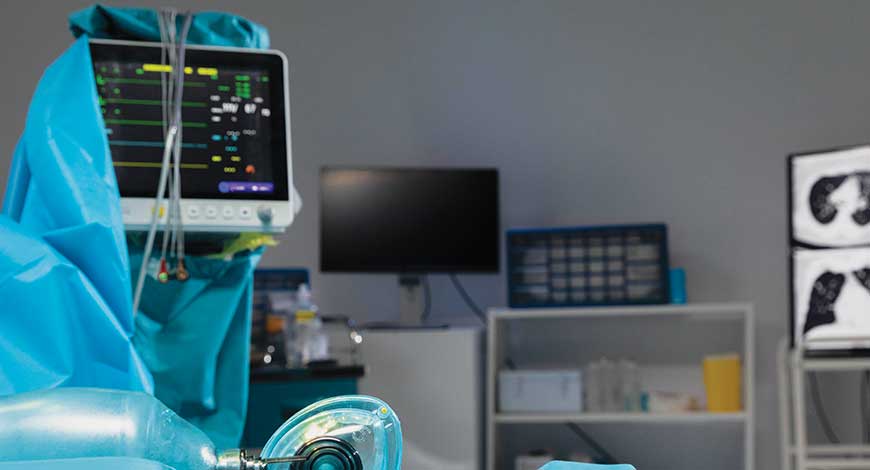
Patient monitoring equipment has embarked on a remarkable journey, transcending traditional approaches to emerge as a cornerstone of modern healthcare. As innovation continues, the harmonious fusion of patient-centered care with technological prowess paves the way for a healthier and more efficient healthcare landscape.
Patient monitoring devices are a vital component of every hospital’s workflow. These devices continuously measure parameters, such as heart rate, respiratory rate, blood pressure, blood oxygen saturation, and other advanced parameters. They facilitate clinicians in accurate and rapid decision making in ICUs, emergency rooms, operating rooms, general wards, and ambulatory surgical centers.
A powerful patient monitoring solution is designed to acquire patient data, aggregate it, and display it in a format that is meaningful and actionable. It can capture a steady stream of patient data from monitors and other medical devices, then feed it securely to an electronic medical record for virtually gap-free patient records from admission to discharge – even during transport.
In recent years, there has been a great deal of innovation in patient monitoring technologies. These innovations are attributed to ease-of-use, accuracy, patient comfort, connectivity, data and trends analysis, advanced parameters, etc. These developments are leading to a new generation of patient monitoring technologies and thanks to rapid advances in technology and significant investment in the field of remote patient monitoring, or RPM, which is expanded in recent years.
Remote patient monitoring (RPM) is the latest advancement of healthcare delivery that uses information technology to gather patient data outside of healthcare settings or hospitals. There are many benefits of remote patient monitoring (RPM) for clinicians including ease of access to patient data and the ability to offer higher-quality care to more patients with a lower amount of risk.
The increase in the rate of surgeries and diseased population, who requires continuous monitoring, increasing demand for portable and remote patient monitoring, increasing funding and investment in patient monitoring devices, and technological advancements are expected to drive patient monitoring devices market in coming years.
The role of SHM
Smart health technologies (SHM) including wearable sensors, are revolutionizing patient monitoring by enabling continuous remote care. These technologies eliminate the need for frequent hospital visits, saving time and improving patient outcomes. The data security in SHM devices contributes to cost-effective healthcare delivery, ensuring data privacy.
The reason behind the increase in revenue of patient monitoring devices is the use of biomedical devices, which leads to the replacement of traditional methodologies, and expansion of market revenue stems from the growing adoption of wearable and remote patient monitoring devices.
With the increased shortages of beds and staff in hospitals, postoperative complications and late patient deterioration detection in general wards have become more challenging and in turn require immediate action. This is where wearable patient monitoring solutions that enable efficient workflow to continually monitor patient conditions and deliver patient-centric care step in. The system refines routine patient monitoring by combining all the benefits of complete wireless interconnection with accurate multi-parameter monitoring, streamlined workflows and seamless integration for home-hospital settings, helping to improve clinical outcomes throughout the patient journey.
Indian market
The Indian market for patient monitoring equipment in 2022 is estimated at ₹500 crore, and 75,000 units. The market saw a decline in 2022 over 2021. The emphasis has been more on premium and high-end models. The government continues to lie low as it struggles with the policy thrust to buy Make in India products, and yet is discerning, with a preference for premium products and features.
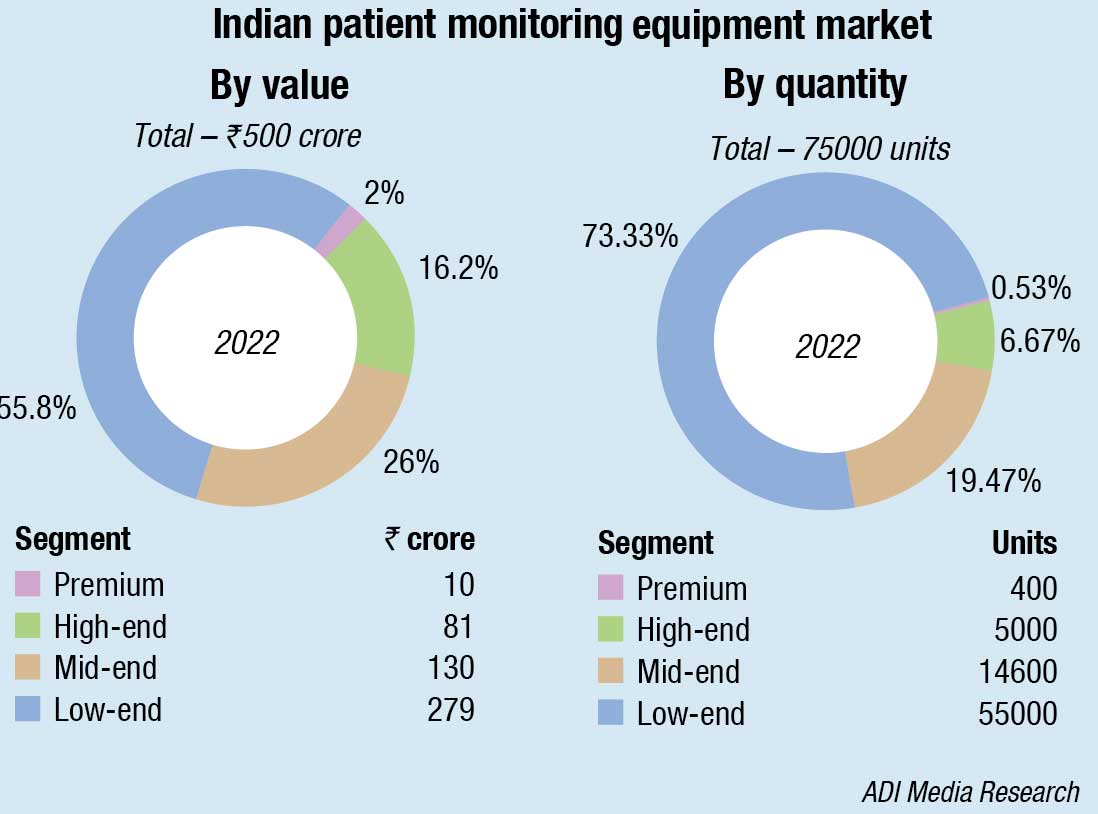
The low-end models continue to have a niche demand, with the result that many Chinese players are finding success with average sales of 500,000 units in a year. The ₹100-crore sales that 2022 lost over 2021 can be explained by the monitors being imported in SKD condition.
|
Indian patient monitoring equipment Leading players – 2022 |
|
| Tier 1 | Philips & Mindray |
| Tier 2 | Schiller, Nihon Kohden, Contec, GE, BPL, Skanray, and Allengers |
| Tier 3 | Sino-Hero, Comen, Edan, Creative, Biolite, and Drager |
| Others | Chinese emerging brands: GMI, Yonker, Lee, Hwatime, Clarity and some others |
|
ADI Media Research |
|
Remote patient monitors continue to gain strength.
Global market
The global patient monitoring devices market is projected to reach USD 43.1 billion by 2030 from USD 27.3 billion in 2023, at a CAGR of 6.8 percent. These include respiratory and anesthesia monitors, neuro-monitoring devices, hemodynamic monitors, fetal and neonatal monitors, cardiac monitors, multi-parameter monitors, and others as temperature and weight monitors, out of which the cardiac monitors segment, with a share of 29 percent in 2023 is expected to dominate the global patient monitoring devices market, and this is attributed to an increase in the product launches.
North America dominated the remote patient monitoring devices market and accounted for the largest revenue share of about 41.1 percent. The increasing adoption of connected healthcare technology and the presence of top and leading market players in this region are contributing to dominate the market. Also, some players are investing in R&D for more advanced patient monitoring devices facilities that will boost the market in coming years.
Major players in the global market include 3M, Boston Scientific Corporation, Covidien, Drägerwerk AG and Co. KGaA, GE Healthcare, Medtronic Plc, Mindray Medical, Omron, Nihon Kohden Corporation, Biotricity Inc., Natus Medical Incorporated, Koninklijke Philips NV , and DexCom, Inc. Manufacturers need to focus on manufacturing devices that are more power efficient, as product recall by regulatory authorities, such as FDA has been a major factor hampering the growth of this market.
Evolving trends in the patient monitoring equipment industry in India
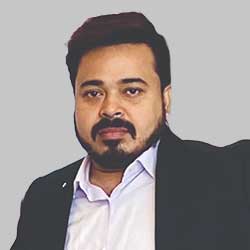 Biswajit Pradhan
Biswajit Pradhan
General Manager & Head – Product Division,
Schiller Healthcare India Pvt. Ltd
The patient monitoring equipment industry in India has been experiencing significant changes in recent years. This is driven by advancements in technology, changes in healthcare infrastructure, and the growing focus on improving patient care and outcomes.
Remote patient monitoring (RPM) has gained traction in India, especially during the Covid-19 pandemic, and has the potential to reduce the burden on healthcare facilities, improve access to care in remote areas, and enhance patient outcomes.
Artificial intelligence and machine learning are being incorporated into patient monitoring equipment to analyze data and provide predictive analytics. These technologies can help healthcare providers identify trends and anomalies in patient data, leading to more timely interventions and personalized treatment plans.
The expansion of telehealth services in India has driven the demand for patient monitoring equipment that can seamlessly integrate with telemedicine platforms. This allows healthcare providers to monitor patients remotely and provide consultations without the need for in-person visits.
There is a growing trend toward home-based healthcare in India, driven by the aging population and the desire for more convenient care options leading to an increased demand for portable and easy-to-use patient monitoring devices that patients and caregivers can use at home.
With the increasing use of digital health solutions, data security and patient privacy have become significant concerns. Equipment manufacturers are focusing on robust data encryption and compliance with data protection regulations.
The Indian government has launched various healthcare initiatives, such as Ayushman Bharat, which have created opportunities for the patient monitoring equipment industry to expand and provide solutions that align with the government’s healthcare goals.
India is witnessing a rise in chronic diseases, such as diabetes, hypertension, and cardiovascular conditions. Patient monitoring equipment is crucial for the continuous monitoring and management of these conditions.
Efforts are being made to make patient monitoring equipment more affordable and accessible to healthcare facilities in rural India to improve healthcare delivery.
The patient monitoring equipment industry in India is evolving rapidly, and these trends are expected to continue shaping the industry in the coming years, with a focus on improving patient outcomes and overall healthcare quality.
Remote patient monitoring (RPM) technology is transforming healthcare delivery, making it more patient-centric and enabling a shift from reactive to proactive care. With RPM technology monitoring patients remotely, healthcare providers can detect potential health issues before they become acute, and intervene earlier, leading to better health outcomes and reducing the need for hospitalizations.
RPM devices concept is moving into the mainstream at a very fast pace. The market is growing with advancements in technologies, such as the Internet of Things (IoT), cloud computing, and artificial intelligence (AI). Bluetooth-based headsets are being used to measure vital signs, such as heart rate, body temperature, and blood pressure of patients remotely from any location.
A significant trend emerging in RPM technology is miniaturization, a process whereby devices makers are making their solutions smaller and less invasive, while partnering with new companies expand their market share and grow the technology. As RPM continues to advance, it stands to have a positive effect on both patients and the healthcare providers treating them.
RPM goes beyond financial measurements; it plays a pivotal role in improving health outcomes and transforming healthcare delivery. RPM eliminates communication barriers, facilitates faster access to healthcare providers, reduces hospital readmissions, shortens hospital stays, and enhances patient education. In doing so, it bridges the gap between the traditional healthcare and modern technology, creating a more patient-centered and efficient healthcare system.
Patient monitoring devices industry
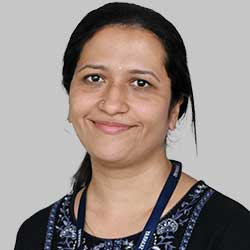 Dr. Arathy R
Dr. Arathy R
R&D Advanced Technologies,
Skanray Technologies
Patient monitoring devices industry is a vital segment of the broader healthcare sector that involves the design, development, manufacturing, and distribution of various medical devices used for monitoring the vital signs of patients.
The main types of patient monitoring devices are as below:
Vital signs monitors: Monitor physiological parameters, such as heart rate, blood pressure, temperature, and respiratory rate for hospitals, clinics, ambulatory care settings, etc.
Continuous monitoring systems: Real-time, continuous tracking of vital signs, such as oxygen saturation and electrocardiogram for critical care, surgery, chronic patients, etc.
Remote patient monitoring (RPM): Helps healthcare providers monitor patients’ vitals and health data remotely for managing chronic diseases, aging populations, reducing hospital readmissions, etc. Also, artificial intelligence (AI) and machine learning (ML) have developed as powerful tools with a potential to transform RPM.
Cardiac monitoring: Specialized monitors, such as Holter and implantable cardiac monitors to track heart rhythms and arrhythmias.
Respiratory monitoring: Includes spirometers and capnography to measure lung function and respiratory parameters for various respiratory conditions diagnosis and management.
Blood glucose monitors: They are essential for the diabetic population to monitor their blood sugar levels regularly.
Fetal and maternal monitoring: Tracks the fetal heart rate and maternal contractions during pregnancy and childbirth, ensuring a safe delivery.
Neuromonitoring: Tracks brain activity, such as electroencephalogram and intracranial pressure for neurology and critical care.
Sleep monitoring: Devices, such as polysomnography machines diagnose sleep disorders by recording brain activity, eye movement, etc.
Temperature monitoring: Devices measuring body temperature for detecting fever and monitoring patient’s health.
Additionally, the industry has seen significant technological advancements, including the integration of wireless connectivity, data analytics, and telemedicine capabilities. Furthermore, wearable health devices like fitness trackers and smart watches have contributed to the growth of the patient monitoring market, as they can track various health metrics for consumers. The industry is growing as technology advances and healthcare delivery models adapt to changing patient needs and demographics.
Leveraging fog-based IoT for enhanced RPM. RPM, utilizing an IoT network, addresses concerns related to privacy, data flow, and service interaction. A fog-based IoT platform introduces a security layer for data privacy, preventing vulnerabilities during data transfer. Fog devices package and preprocess patient data, reducing network traffic, and an adaptive security layer ensures secure data transmission. Incorporating fog devices minimizes data entry points, streamlining data flow and reducing the burden on the server. Additionally, built-in speech recognition and surveillance systems enhance patient interaction and monitoring, making healthcare more accessible, cost-effective, and efficient.
Machine learning’s impact on RPM. Machine learning in RPM equipment significantly improves patient outcomes and healthcare efficiency. Deep learning and transfer learning empower RPM devices to collect and analyze patient data effectively, helping doctors detect conditions accurately. This technology analyzes data from various medical devices, enabling precise diagnoses and treatment plans.
Furthermore, with the use of smartphone apps, remote patient monitoring is becoming efficient and easier. For instance, My medical app tracks health information from different sources, which include personal medical records and fitness tracking data. It is useful to provide a customized plan for the patient.
In addition, increase in the use of wearables, smart implants, and biosensors that are used for monitoring chronic disease in the patient, including continuous temperature monitoring, glucose monitoring, pulse oximetry, and blood pressure monitoring are also fueling the market but because of the high cost of installation of such RPM devices and training process hampering the market growth.
Moreover, regular maintenance, software upgrades, and technical support services may incur additional costs.
Clinical assistive applications improving clinical decision making and optimizing workflow
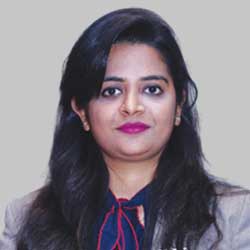 Nandini Shukla
Nandini Shukla
Product Manager – Patient Monitoring & Connectivity Solutions, PMLS
Mindray India
Clinical assistive applications (CAAs) have potential to transform clinical decision support and perform key healthcare tasks in a better way by automating many aspects of patient care. In patient monitors, advance tools can help to predict treatment protocol and enable faster clinical decision.
Clinical challenge in NICU is how to identify apnea of prematurity (AOP event) and distinguish from periodic breathing. Patient monitors provide an intuitive OxyCRG interface, in which apnea event will be identified as ABD category (apnea, bradycardia, and desaturation) and alerts in visual, audio, text, and light, so the nurses can notice event timely and take treatment . Special screen layouts make it simpler for clinicians to review these events and greatly decrease false alarms and help to effectively identify apnea and remind caregivers to notice the event timely, and make it more accurate to decrease possibility of unnecessary intervention and enable smooth clinicians’ workflow.
Another clinical challenge is how to control oxygen concentration at an appropriate level in neonates to prevent retinopathy of prematurity and bronchopulmonary dysplasia. Patient monitors are equipped with dashboard to show set target value and abnormal period of SpO2, PR, and PI. When SpO2 reading is higher or lower than the target, numeric area will highlight, so clinician can notice the event easily. 24 hours of SpO2 statistics bar chart can show percentage of target SpO2 and help doctor to evaluate treatment effect. Such dashboards available for other parameters, like ECG/IBP/etCO2/respiration/NIBP/temperature, can be used to define target and review its statistics.
Alarm fatigue occurs when hospital staff becomes desensitized to alarm alerts, causing missed alarms or delayed response affecting patients’ safety. With multi-parameter fusion technology, complex algorithm automatically fuses ECG, SpO2, or IBP signal together to identify false alarm during analysis process and achieve more accurate arrhythmia analysis results.
CAAs provide qSOFA and SOFA scoring, help in early recognition of sepsis, and assist proper treatment by integrating multiple ways to better reflect fluid responsiveness. CAAs have special dynamic intuitive graphical display, which allows better visualization enabling holistic understanding of hemodynamic status and integration of patient’s vital data, facilitating better study on heart-lung interaction.
Advanced features like real-time data analysis and predictive maintenance capabilities, may contribute to a higher cost although investing in an extensive solid RPM system can result in substantial long-term benefits, such as greater operational efficiency, decreased downtime, and improved asset management.
Remote patient monitoring is revolutionizing the hospital care industry as the evolving technology is helping practitioners monitor patient’s health remotely by digitally capturing and exchanging health data from the patient to the healthcare practitioner as part of a patient’s electronic medical record (EMR). 90 percent of the countries are still facing such issues as lack of funding, and a continuing tide of staff burnout and shortages.
Optimizing workflows and operational efficiency. Many hospitals are starting to integrate telemetry devices with other technological capabilities like video, audio, and real-time edge analytics to help healthcare practitioners monitor patients remotely. Remote monitoring capabilities can be used to reduce costs and enhance operational efficiency as fewer staff can monitor multiple patients – sometimes across different sites – from a central location.
Safeguarding patient care. Another challenge hospitals are facing is the ratio of healthcare practitioners to patients due to shortage of human resources or budgets. Patient-to-nurse ratio in some facilities has gone from 1:1 to 3:1 or higher. RPM helps monitoring patients with in-room cameras with audio capabilities and built-in analytics, coupled with telemetry devices that monitor a patient’s vital signs and allow healthcare practitioners to observe patients in real time. This is also reducing patient’s movement, healthcare better to manage patients need and provide quality care.
Ensuring patient privacy. Cameras used in patients’ rooms have cyber protection in place to ensure that patient data is encrypted and protected, and ensure that patient information is safeguarded.
Overall RPM equipment installation in hospitals reduces emergency department visits by 68 percent, hospitalizations by 32 percent, and medication non-compliance, which is responsible for half of all treatment failures and a fourth of all hospitalizations, physician visits by 47 percent and phone calls by 41 percent.
RPM is still an emerging field but accelerated in many ways. Biomechanics tracking include ambient home sensors embedded in floors and ceilings that can track your heart rate and respiration rate without even wearing it. Additionally, floor-embedded accelerometers, and sensors that utilize cameras can track clinically relevant biomarkers associated with gait and walking. Wearable and ambient digital health technologies involve more participation of patients as this health tracking equipment is affordable and accessible and reduces the patient movements to hospitals.
With the involvement of at-home clinical trials, RPM is becoming more popular and revolutionizing the healthcare sector. Some researchers began conducting remote clinical trials. They would ship off Covid-19 testing kits, pulse oximeters, and other equipment and then gather patient data via cloud apps and phone interviews.
RPM technologies improve congestive heart failure (CHF) disease and reduce hospital readmissions giving overall improvements in patients’ quality of life as the physicians can track oxygen saturation levels and other indicators of CHF symptoms remotely in real time and help to improve medication adherence through educational tools and medication reminders via telehealth visits.
Natural language processing (NLP) is a branch of AI that focuses on the interaction between computers and humans through natural language analyses and processes large amounts of unstructured data, such as electronic health records (EHRs) and clinical notes, and in recent times more healthcare organizations are adopting AI technologies.
Moreover, NLP can contribute to AI in healthcare, particularly in remote patient monitoring. It enables the analysis of data from remote devices, helping healthcare providers make informed decisions about patient care. Additionally, NLP improves patient-provider communication by facilitating natural and conversational interactions.
Another latest innovation, LiFi (light fidelity) technology is an emerging innovation poised to transform patient care, medical research, and healthcare efficiency. Offering high-speed, secure, and dependable connectivity, LiFi improves communication, enables real-time patient monitoring, and streamlines healthcare operations. It enhances security, privacy, and data safeguarding while facilitating the integration of IoT devices and empowering VR/AR applications. As healthcare institutions adopt LiFi, they tap into its potential to enhance patient outcomes, boost efficiency, and accelerate medical advancements.
Incorporation of RPM programs can lighten financial burdens of hospital industry and target to increase revenues. Efficient management of chronic diseases through RPM offers significant cost-saving potential for healthcare systems. Chronic illnesses, responsible for 86 percent of healthcare expenses, can benefit from RPM in several ways like reduced patient visits and physician travel, cost-effective patient vital signs and data tracking, enhanced treatment quality, leading to fewer medications and interventions.
RPM allows healthcare facilities to delegate tasks like patient monitoring, data remediation, and ECG interpretation to third-party providers, reducing the need for additional clinical staff. This lowers the workflow burden on the existing staff, enabling them to handle patient surges efficiently, while third-party providers can adjust resources as needed, offering cost-efficient staffing flexibility.
Telehealth remote patient monitoring plays a critical role in in-home care for patients who are living with chronic conditions. Many older patients with chronic conditions live alone and do not have anyone to help them manage their health and treatment plans each day, which puts them at a greater risk for complications.
With RPM, virtual nurses (also known as telehealth nurses) regularly check in with patients about their condition(s). Often, the work nurses do involves leveraging data from patients’ medical-monitoring devices, which helps provide personalized care for those patients.
Virtual nurses are typically highly skilled registered nurses that have been briefed in providers’ procedures and understand clinical protocols, remote monitoring best practices, and HIPAA regulations. They are trained to effectively communicate with patients to assess and identify potential issues so those concerns can be proactively addressed. This helps minimize preventable complications and adverse events.
Many primary care providers order RPM services to focus on a specific ongoing condition, such as diabetes care or cardiac monitoring. And that monitoring may be provided in part via a durable medical equipment supplier.
Overall, RPM trends are poised to play a vital role in the future of healthcare, and as technology continues to advance, we can expect to see even more innovative solutions emerge in this space.
Remote therapeutic monitoring is a key aspect of RPM and involves monitoring patients’ responses to therapy remotely, typically through the use of connected devices or platforms. It can be particularly useful for patients with chronic conditions who require ongoing therapy, such as diabetes or hypertension, as it can help to identify and address potential issues before they become serious with the help of remote patient monitoring trends.
Improving healthcare with advanced technologies
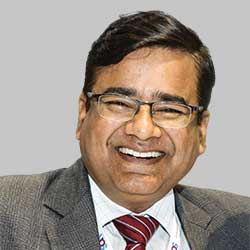 Anil Srivastava
Anil Srivastava
Chief Operating Officer,
Nihon Kohden India Private Limited
In recent years, the field of healthcare has witnessed robust growth and advancement, revolutionising how diseases are detected, monitored, and treated. Patient monitoring systems play an imperative role in the delivery of healthcare and are becoming increasingly sophisticated, reliable with the emergence of new innovations. The use of patient monitoring systems is becoming more widespread, it is important for healthcare professionals to understand the latest advancements in technology and be aware of the trends, innovations that are shaping the future of the patient care.
One of the flagship contributions of Nihon Kohden is the invention of pulse oximetry. In 1974, Nihon Kohden researcher Takuo Aoyagi developed the principle of pulse oximetry and played key-role in controlling, combating global pandemic. It is a non-invasive, gentle on the patient and an example of the patient-centric approach of the company. Pulse oximeters have proved to be an indispensable part of the monitoring equipment during the Covid-19 pandemic.
As technology continues to advance, efficient diagnostic tools are helping in earlier detection and more precise treatment of diseases. In patient monitoring segment, Nihon Kohden has been dedicatedly involved in the development of unique sensing technologies and has given the clinical world many innovations of its R&D since its inception. Be it the development of the Pulse oximetry principle, which has saved many lives during the Covid-19 pandemic, the development of the World’s lightest and smallest mainstream EtCO2 sensor which can be used on both intubated and non-intubated patients, unique algorithms/principles like Pulse wave transit time to access the patient’s hemodynamic conditions and measurement of sudden change in patient blood pressure without any dedicated and costly sensors.
As a leader in patient monitoring systems, Nihon Kohden continues to develop advanced sensing technologies, and algorithms that could reduce the burden on healthcare professionals and make patient monitoring much simpler. And of course, with our Digital Health Solutions, we are in pace with the current trends such as remote monitoring, patient data records, and are working to meet upcoming future trends in the patient monitoring domain.
We strive to become the inspiration that lights the path forward to the future of people and healthcare with the philosophy we have upheld since foundation.
Patient monitoring equipment and RPM technologies are reshaping the landscape of healthcare. As these technologies continue to evolve, they bridge the gap between traditional healthcare and modern innovations, offering improved patient outcomes, enhanced operational efficiency, and significant cost savings for healthcare systems. With the promise of technologies, the future of patient monitoring equipment holds vast potential for further advancements. These innovations are not only transforming the way healthcare is delivered but also bringing about a patient-centered, efficient, and data-driven healthcare system, ultimately benefiting patients and healthcare providers alike. The trajectory of this technological evolution indicates a promising future for healthcare, where patient well-being remains at the forefront of innovation and progress.












